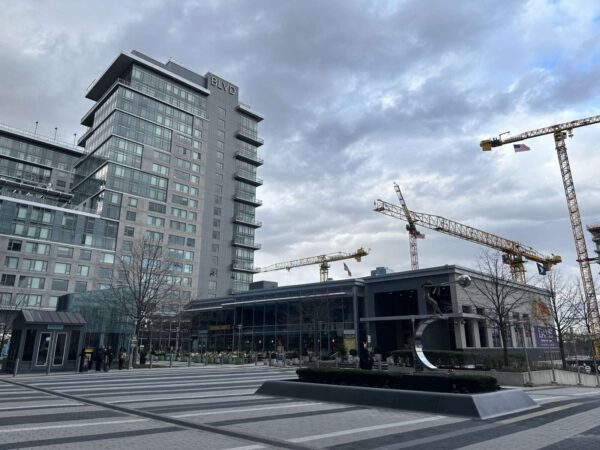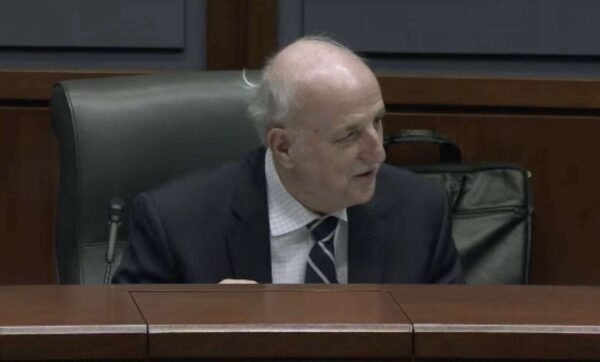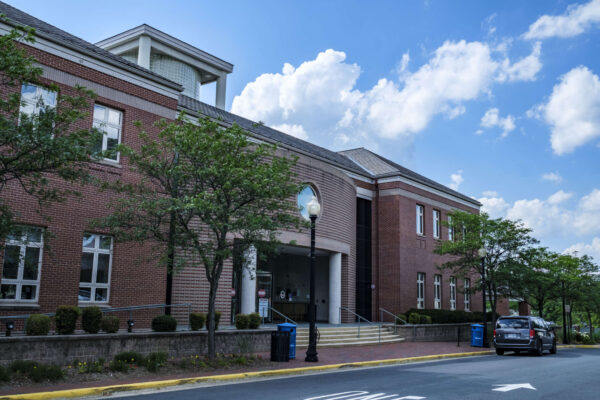
Growth in Fairfax County is focused in Tysons, the Dulles Suburban Center and other mixed-use areas.
In addition, growth in multifamily housing units outpaced growth in single-family housing between 2010 and 2023, and office space continues to lead the way in non-residential development potential, county staff said in a presentation at the Fairfax County Planning Commission’s policy plan committee meeting on July 13.
Development in mixed-use “activity centers” like Tysons, the Dulles Suburban Center, the Reston Transit Station Areas and the Richmond Highway Corridor lines up with the concept for future development outlined in the Fairfax County Comprehensive Plan.
“The plan has a lot of flexibility built in now and plenty of options for new residential development to occur,” Andrea Dorlester, the county’s principal planner, said in the presentation.
The presentation served as a preview of a “State of the Plan” report that will provide a progress update on the county’s planning efforts between January 2011 and December 2022. Building off a similar evaluation from 2012, the report is slated for release at the end of the summer.
The county can support residential growth through at least 2045, according to the comprehensive plan and a forecast from the Metropolitan Washington Council of Governments.
Overall, the comprehensive plan notes potential for 182,000 additional dwelling units, with 91% of those units being multifamily housing. The MWCOG forecast projects an 80,000-unit increase by 2045, per the presentation.
At the meeting, Braddock District Commissioner Mary Cortina noted that addressing affordability in housing is challenging.
“We know we have a housing problem, we say we have growth, but what is being built is not necessarily addressing affordability,” Cortina said.
Between January 2011 and December 2022, the majority of amendments to the comprehensive plan added to planned new housing.
“Several site-specific plan amendments serve to provide for affordable housing, affordable housing for seniors [and] assisted living,” Dorlester said. “And there were some notable conversions from commercial to planned residential with new planned townhouse neighborhoods replacing portions of old strip shopping centers.”
Dranesville District Commissioner John Ulfelder asked whether permitting a “missing middle” approach like the one adopted by neighboring Arlington — where the county would allow some smaller multifamily units in areas that now only allow single-family housing — could provide an opportunity for additional residential growth.
That would require a policy change, but in the context of the State of the Plan, Fairfax County planner Clara Johnson said that with plan amendments, the county is seeing redevelopment of shopping centers and along major transportation corridors.
Adopted changes to the plan also reflect a transit-oriented approach, according to the presentation.
“In areas where transit is not available or planned, such as the downtown McLean Community Business Center, plan changes focused on improving walkability, creating new public spaces, implementing good urban design and creating bonus height or density incentives to promote revitalization and placemaking measures, such as provision of urban park spaces,” Dorlester said.

The Fairfax County Planning Commission will take another stab at a major overhaul of Reston’s defining planning document next month.
At a Wednesday (June 28) meeting, the commission once again deferred a decision on the extensive update of Reston Comprehensive Plan to July 12 — a move that Hunter Mill District Commissioner John Carter said would allow staff time to incorporate proposed revisions. The commission first deferred a decision on the project on June 14.
The draft under consideration is the product of more than three years of work and dozens of community meetings.
In May, staff released its version of the plan after a first draft was formulated last year by a task force assembled by Hunter Mill District Walter Alcorn in 2020. On June 13, staff also released a 25-page addendum to the report.
Ahead of the commission’s meeting, the county released a chart with county responses to all public testimony received at the last public hearing — a move that Carter said was unusual but helpful to delineate proposed recommendations and the responses from the county.
“We don’t usually go through and address each of the people that testify,” Carter said.
Carter — who walked through a series of suggested revisions during the Wednesday meeting — said the transportation section clearly identifies multimodal components and removes the infamous “road to nowhere” that cuts from Isaac Newton Square to American Dream Way through the Hidden Creek Country Club golf course.
He said he opposes a proposed road connection from American Dream Way to North Shore Drive — a connection that drew significant opposition at the public hearing earlier this month.
Citing safety concerns, Carter said the connection would be dangerous and contradicts the county’s recent consideration of a project that essentially makes American Dream Way a private street.
“If we’re leading this, we just approved a project that did not provide that connection and made American Dream Way a private connection,” Carter said.
Braddock District Commissioner Mary Cortina called a bicycle map in the plan “unreadable” and in need of edits.
“I’m hesitant to continue to put that forward in there without being able to understand what it says or where its going,” Cortina said.
According to Carter, the environment section was pared down in response to concerns that it exceeded the limits of the policy plan and set higher standards for stormwater management in Reston than elsewhere in the county. Those policies include moving towards net-zero energy use, achieving LEED platinum for more buildings, and adding more electric vehicle charging stations.
While these regulations are “good ideas,” the “form” was not right, Carter said.
“I know we struggled quite a bit with that chapter, but I think it’s come out pretty good,” he said.
Carter stressed the need to ensure Reston is able to retain existing market rate affordable housing within the transit station areas (TSA) while establishing new affordable housing.
He seemed to share Cortina’s concerns about the document’s readability, saying that he initially hoped it could have been a gold standard for other similar policies in the county and throughout the state with a combination of graphics, fonts and other enhancements.
Franconia District Commissioner Daniel Lagana suggested adding Geographic Information System (GIS) components to the plan — a suggestion that Chris Caperton, deputy director of the county’s Department of Planning and Development, said was a possibility in future iterations.
Carter said he was still happy the plan was reduced by roughly 40 pages and emphasized more active verbs. He pitched several options for imagery and captions to staff.

The Town of Herndon’s comprehensive plan for 2050 received a big funding boost from the U.S. Department of Transportation this week.
In a release on Monday (June 26), Sens. Mark Warner and Tim Kaine announced the town received $720,000 in funding from the federal Rebuilding American Infrastructure with Sustainability and Equity grant program (RAISE).
The funds will be used to develop the town’s comprehensive plan, called Herndon 2050. The town was one of five Virginia localities to receive grants from the more than $38 million allocated in federal infrastructure investment.
“The town’s receipt of this RAISE grant is a testament to our staff’s expertise and ability to successfully compete and prevail in highly competitive grant environments,” Town Manager William H. Ashton II said in a news release. “This award will provide significant financial assistance in achieving the town’s goals.”
The grant allows the town to proceed with developing the plan, which will guide transportation, land use, environment, housing, economic development and capital improvement issues over 25 years.
Community Development Director Lisa Gilleran said the funds are integral to completing the plan.
“The Comprehensive Plan is an important planning tool for our community,” said Gilleran. “One of our goals will be to develop this plan through the lens of equity to ensure that all residents, visitors, employers, and employees in the town live, work, and recreate in an environment that is conducive to their safety, success, and well-being.”
Once the process begins, it’s expected to take between one to three years to complete. The town will work with the public on Herndon 2050, which will include an economic development component and comprehensive plan implementation guide for the first time.
The overall project is expected to cost $900,000. The grant funding application states that the plan will incorporate active transportation projects, job diversification, metrics to reduce vehicle emissions, and inclusive economic development opportunities.
The town intends to put out an request for proposals in July, with a consultant under contract by September, according to town spokesperson Anne Curtis.

